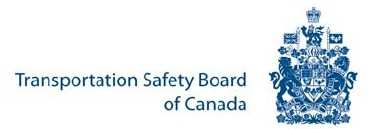Says Both To Blame For Engine-Out Takeoff Crash
The operator of a Mistubishi MU-2 involved in a fatal December
2005 takeoff accident has sued the planemaker, stating it knew the
turboprop twin was uncontrollable in takeoff configuration in the
event of engine failure. The lawsuit also alleges enginemaker
Honeywell International knew of a potential problem with the MU-2's
engines, but did not require modifications to solve the
problem.

Two pilots were lost shortly after takeoff from Terrance,
British Columbia on December 20, 2005. A recent report by Canada's
Transport Safety Board placed partial blame for the accident on the
loss of an engine on takeoff.
"During the takeoff, the left engine combustion chamber plenum
split open due to a fatigue crack," said the report, cited by The
Canadian Press. "The rupture was so extensive that the engine
flamed out."
TSB investigators also noted 60 similar reports over a 30-year
period of cracked or damaged plenums in the Honeywell turbines used
in the MU-2. The manufacturer changed the component design in 1977,
but did not require modifications to powerplants already in
service.
Both pilots were employees of the former Nav Air Charter Inc.,
which had its operating license pulled by Transport Canada shortly
after the accident for failure to provide a valid Canadian aviation
document.
Shortly after TSB released its final report on the accident,
representatives with Nav Air filed suit in British Columbia Supreme
Court against Mitsubishi and Honeywell, seeking compensation for
the lost plane, employees and cleanup of the accident scene.
Nav Air says Mitsubishi's operating manual for the
high-performance turboprop advises pilots to set flaps to 20
degrees in certain takeoff situations, even though the planemaker
knew the aircraft would become uncontrollable in that configuration
if an engine lost power.
The lawsuit also claims Honeywell contributed to the accident,
stating the company "failed to use reasonable care in the design,
manufacture, distribution and after-market support of the engine
and, more particularly, the combustion plenum."
Neither company has yet responded to the suit, according to the
CP.
In its report, TSB makes four recommendations for safe operation
of the MU-2, including warning operators of potential problems with
the original plenums, as well as reinforced training procedures on
engine-out operations.

A popular choice with cargo operators due to its low cost and
high speed, the MU-2 has a history of accidents that have led some
lawmakers and officials to call for the aircraft's grounding. The
MU-2's flight characteristics at low speeds and altitudes -- what
is traditionally called "slow flight" -- are frequently cited by
critics of the aircraft.
Mitsubishi has acknowledged the MU-2 poses additional challenges
to a pilot unfamiliar with the aircraft's idiosyncrasies, and
supports requiring pilots to earn a type-rating for the aircraft --
something the FAA and other regulatory agencies have, to date,
stopped short of doing.
 ANN's Daily Aero-Linx (05.02.24)
ANN's Daily Aero-Linx (05.02.24) ANN's Daily Aero-Term (05.02.24): Touchdown Zone Lighting
ANN's Daily Aero-Term (05.02.24): Touchdown Zone Lighting Aero-News: Quote of the Day (05.02.24)
Aero-News: Quote of the Day (05.02.24) ANN FAQ: Contributing To Aero-TV
ANN FAQ: Contributing To Aero-TV NTSB Final Report: Cirrus Design Corp SR20
NTSB Final Report: Cirrus Design Corp SR20




